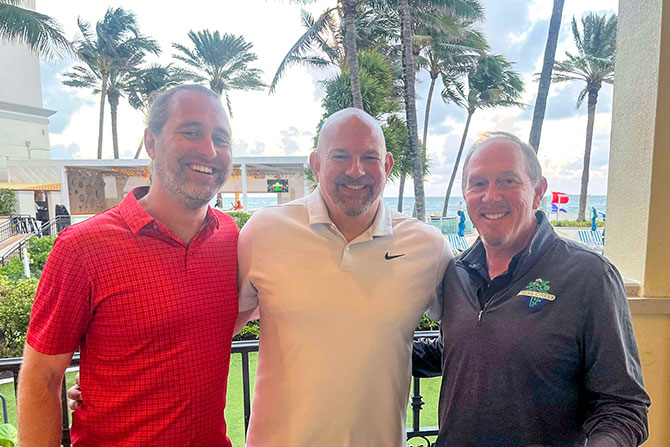I have been receiving more questions about the Federal Trade Commission’s (FTC) changes related to advertising and record keeping. While I have previously summarized the tentative new rules, allow me to take a deeper dive for you. I do wish to point out one important point before moving on. Even if the Vehicle Shopping Rule is struck down by the courts, the FTC has implemented the Junk Fee Rule which would then be applicable to new motor vehicle dealers. While I will address the Junk Fee Rule later, I did not wish this important legal point to go without emphasis.
Some brief background: In December of 2023, the FTC introduced the Combating Auto Retail Scams (CARS) Rule in an effort to address alleged deceptive practices in the auto retail industry. This rule, aimed at creating greater transparency and fairness for consumers, will significantly impact new motor vehicle dealers once it goes into effect. I believe a more accurate description is the term used by NADA, and that is the Vehicle Shopping Rule. I will refer to it as the latter hereafter.
The legality of the Vehicle Shopping Rule is being reviewed by the Fifth Circuit for the United States Court of Appeals. Oral arguments were heard on Oct. 9, 2024, and a ruling is expected by the end of the year. What follows is a look at the requirements for auto dealers if the Vehicle Shopping Rule is enforced by the Courts as written.
Key Requirements for Dealers Under the Rule
Should the Vehicle Shopping Rule become effective, new motor vehicle dealers will need to comply with several key requirements. These include clear disclosures on pricing, financing and add-ons, as well as limits on certain fees and practices. Here’s a general breakdown of what will be required:
- Disclosure of “Offering Price”
Dealers must clearly present an “Offering Price” for the vehicle, which includes any dealer fees and “add-ons” that the consumer must pay to buy or lease the vehicle. This “Offering Price” is required to be disclosed at the time the consumer asks about a specific vehicle, or there is an advertisement showing an amount or financing term on any vehicle or group of vehicles. You can state that the “Offering Price” is negotiable.
“Add-ons” are defined as products or services not supplied or installed by the vehicle manufacturer yet charged to the consumer (directly or indirectly) in the context of the vehicle’s sale or lease. “Add-ons” are commonly thought of as physical items that are pre-installed on the vehicle, such as window tint, paint protection, etching, theft deterrent products, roof racks, etc.
The only items that do not have to be included in this “Offering Price” are state-mandated fees and taxes. However, and this is very important, our West Virginia documentary fee is not a state-mandated fee, it is a state-allowed fee. Consequently, a motor vehicle dealer will be required to add any documentary fee to the “Offering Price.” The “Offering Price” can then state that it is the price “plus government fees and taxes.” - Clear Financing Disclosures
Dealers must disclose financing terms transparently, including the annual percentage rate (APR), total interest over the loan term and other financing costs. A major change within the Vehicle Shopping Rule goes beyond your normal Reg. Z (financing) or Reg. M. (leasing) disclosures. When a salesperson or manager presents the “Offering Price,” they are also required to now disclose the monthly payment, the total amount repaid and any down payment.
These requirements are beyond, and in addition to, the normal Reg. M and Reg. Z requirements, the trigger being the requirement to disclose the “Offering Price.” To emphasize again, while you can preclude government fees and taxes from the “Offering Price,” best practice would be to clearly state that any “Offering Price,” or total amount repaid, excludes government fees and taxes and that those are additions. - Add-On Product Transparency and Value
Admittedly, the new proposed Vehicle Shopping Rule is vague regarding its add-on product policies. Add-ons, such as extended warranties, insurance products or service contracts, must be fully disclosed to consumers, including the cost and impact on financing. Dealers must obtain affirmative consent from consumers before adding these products to the transaction. This requirement helps prevent “packing,” a practice where dealers add extra products or services to the transaction without the buyer’s full knowledge or consent.
What is “express or informed consent” for the purpose of add-ons and other charges? The rule requires an unambiguous consent to the charge, both what it is for and its amount. Disclosure must be made both orally and in writing. A dealer will need a separate signed document for each add-on, and translation is necessary.
I believe this is going to require the re-drafting of certain product disclosure forms to ensure their clarity. Obviously, we will need to work with our vendors on these forms. This is because the FTC has stated that pre-check boxes and signing at the end of a document are likely not to be enough, and even electronic signatures without context can violate the rule.
To emphasize again, we are going to have to use forms that clearly describe the charge, the price of all add-ons (optional and mandatory) and dealer fees, with clear statements that optional products are indeed optional and not needed for purchase or financing.
The FTC also believes that certain voluntary protection products have no value. To illustrate this point, the FTC discussed nitrogen-filled tires, particularly when the level of nitrogen is no more than is normal in the atmosphere and overstating its positive attributes to a consumer. GAP was also mentioned, particularly because the value of the car and the customer providing sufficient equity shows that GAP has little value. Accordingly, some thought needs to be given when selling GAP. Service contract values can also be questioned if the service contract materially covered the vehicle for the same time frame and extent that an existing manufacturer warranty provides. The FTC couches this in terms of whether the voluntary protection product or add-on provides benefit to the consumer. The old rule of thumb of offering 100% of the products to 100% of customers 100% of the time may need to be modified. The dealer is going to be required to maintain records that substantiate the benefits of voluntary protection products sold to an individual customer. - Record-Keeping Requirements
The Vehicle Shopping Rule’s new record retention requirements are extremely burdensome. Dealers are required to create and maintain records necessary to show compliance with the rule for a period of 24 months. This includes all advertisements, sales scripts, training materials, marketing materials, all communications with the customer, such as texts, emails, social media, etc., and other communications, including business development centers. Also included are all retail transactional documents, particularly for add-on consents. Taking a rather expansive approach, the FTC requires dealers to keep records of written complaints about sales, financing or leasing terms and any written questions and responses about any motor vehicle. You can obviously see how burdensome this could become.
Lastly, consumer waivers of these requirements are prohibited. - Compliance and Penalties
Non-compliance with the Vehicle Shopping Rule can lead to significant penalties for dealers. Current penalties exceed $50,000 per violation. Also, the FTC is becoming very aggressive by naming individual dealers and general managers in lawsuits over advertising and issues with voluntary protection products. In fact, even though the Vehicle Shopping Rule is not current law, the FTC is currently attempting to require dealers, in proposed consent decrees, to follow the details of the Vehicle Shopping Rule.
The Vehicle Shopping Rule represents one of the most stringent regulatory steps taken in recent years which impacts auto sales. Advocates for the Rule argue that it will foster a more transparent, customer-friendly auto retail environment. As the NADA study has shown, the Vehicle Shopping Rule will require the customer to spend more hours during the buying process, will greatly increase costs for dealerships and overly regulate areas that already are regulated by a myriad of state and federal laws. - Junk Fee Rule
As stated in the beginning, let’s briefly discuss the FTC’s “Junk Fee Rule.” Currently, the FTC states that the Junk Fee Rule does not apply to motor vehicle dealers because the Vehicle Shopping Rule exists. However, if the Vehicle Shopping Rule ceases to exist, the Junk Fee Rule will apply to motor vehicle dealers. Instead of using the term “Offering Price,” the Junk Fee Rule uses the term “Total Price.”
The FTC’s proposed “Junk Fee Rule” defines “Total Price” as the sum of all fees and charges a consumer must pay for a good or service, excluding shipping and government charges. The total price must include all mandatory fees, such as service fees, convenience fees or delivery fees. And the total price must include any mandatory ancillary good or service.
Consequently, at least on advertising issues, if the Vehicle Shopping Rule does not come into effect, dealers are going to be required to change advertising practices as just outlined in this article.
Be on the lookout for more information. I am working with your association on preparing a quick reference for you to use while navigating these complex legal regulations. As always, do not hesitate to reach out to myself or your association for assistance on these matters.









